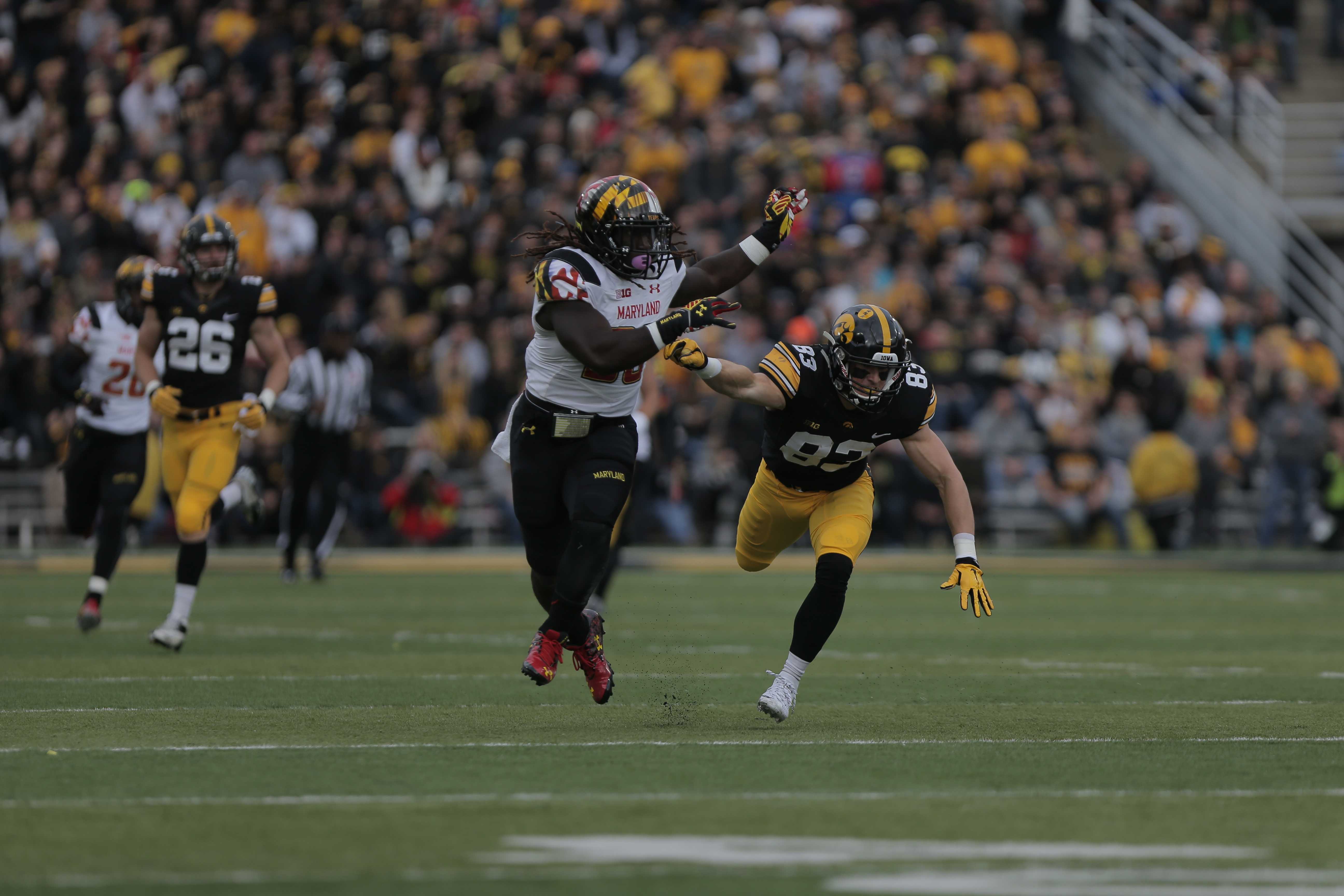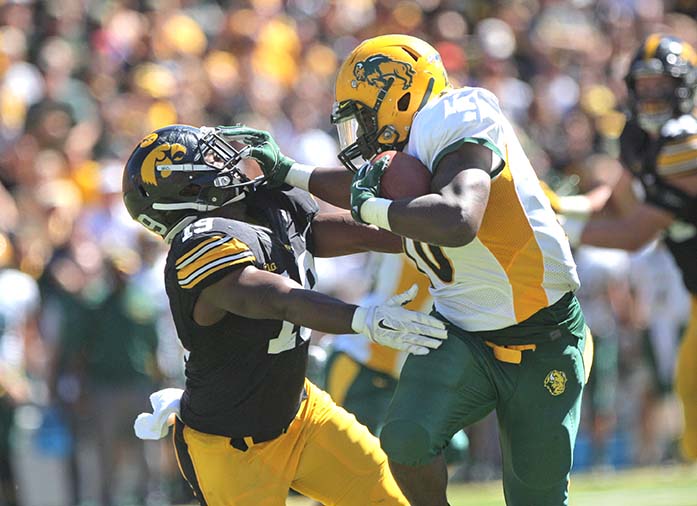Iowa’s rushing defense has not been great so far this season. That has to change
By Jordan Hansen
After three games, it’s apparent the Hawkeyes are struggling to stop the opposing offenses from moving the ball on the ground.
Iowa is allowing 174.33 rushing yards per game. That ranks 91st in the nation and 11th in the Big Ten. The Hawks finished fourth in the Big Ten in the stat last year.
Against North Dakota State, the rushing total was 236. Iowa head coach Kirk Ferentz didn’t have a lot to say about it after the game, but he is well aware it’s a problem.
“We’re not going to be successful doing that.” he said after the game, “I know that.”
The struggles go back to late last season. In the Hawkeyes’ first seven games in 2015, they allowed just one team to rush for more than 100 yards — North Texas — which the Hawkeyes blew out, 62-16. Most of the Mean Green’s yardage on the ground came long after the game had been decided.
As Iowa started to push through the Big Ten slate, however, things shifted. Maryland rushed for 167. Indiana rushed for 227. Minnesota, Purdue, and Nebraska combined for 407.
During the postseason,its got much worse. Michigan State gained 174 in the Big Ten Championship game, and Stanford rushed for 206.
It’s an issue and other teams are noticing.
“We thought we had a chance to win the line of scrimmage,” North Dakota State head coach Chris Klieman said. “I didn’t know if we’d get 200, but I knew that we could push the pile and create some havoc.”
This is a problem, for a couple reasons.

First, the Hawkeyes are not a “quick-strike team” as ball control has (and always will be) Ferentz’s mantra. It normally takes a bit for Iowa to get the ball down the field, as it relies on heavy dosages of runs, mixed with a few pass plays.
Herein lies the issue. If Iowa doesn’t have the ball for a significant chunk of the game, there’s going to be a problem. The reason North Dakota State was able to beat Iowa (in the broadest sense) can be boiled down to possession.
The Bison had the ball for 36:40; Iowa had it for 23:20. That’s a recipe to lose against games in the Big Ten — or any other team, really.
The Hawkeyes are also dead last in the Big Ten in ball possession, too, averaging a little over 22 minutes per game. Now this is in part because of the blowouts in the team’s first two games, but it’s a trend and something to watch.
As a source of comparison, Iowa was fifth in the Big Ten last year in possession, averaging more than 31 minutes per game.
Long story short, if the Hawkeyes can’t get other teams off the field, they’re going to pay the price. It circles back to the rushing game, because that’s the easiest and most efficient way to run the clock.
So how does Iowa fix it?
“We need to be assignment sound,” outside linebacker Ben Niemann said. “Communication and getting the front set where we want it has to improve. If you can’t stop the run, you can’t win games.”
The Hawkeyes have another test this weekend; Rutgers owns the third-best rushing offense in the Big Ten, averaging a meaty 229.33 yards per game.
Holding it well below that mark will be crucial.
“It gets back to our being a little bit better with just our fundamentals and quicker to close things off, shut gaps off, that type of thing,” Ferentz said. “A game of inches, the clichés about that stuff, it really is true.
“We’ve got to do a better job there to shut off drives, etc., get off the field.”



